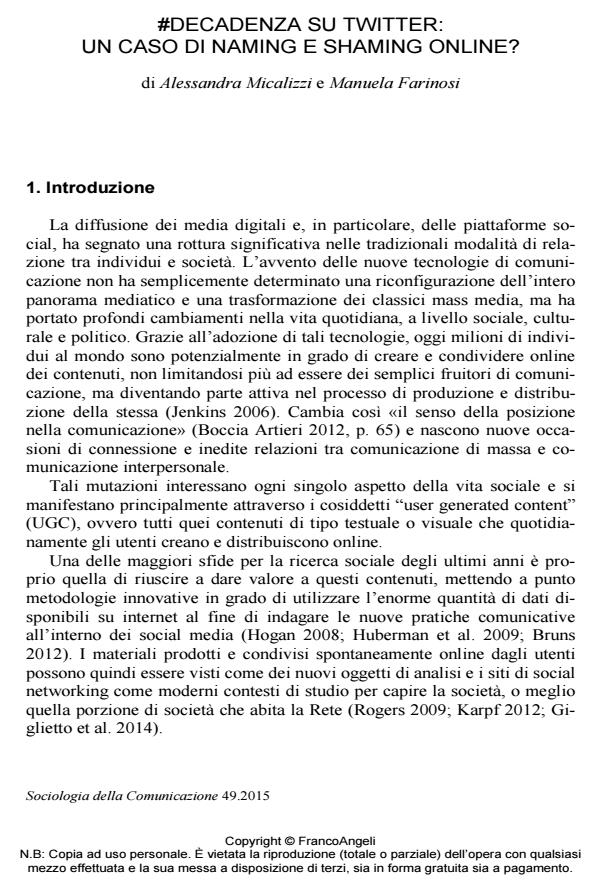#decadenza on Twitter: a case of online naming & shaming?
Journal title SOCIOLOGIA DELLA COMUNICAZIONE
Author/s Alessandra Micalizzi, Manuela Farinosi
Publishing Year 2015 Issue 2015/49
Language Italian Pages 22 P. 83-104 File size 265 KB
DOI 10.3280/SC2015-049006
DOI is like a bar code for intellectual property: to have more infomation
click here
Below, you can see the article first page
If you want to buy this article in PDF format, you can do it, following the instructions to buy download credits

FrancoAngeli is member of Publishers International Linking Association, Inc (PILA), a not-for-profit association which run the CrossRef service enabling links to and from online scholarly content.
The proliferation of social platforms has led to profound changes in the interaction between individuals and society, giving rise to new practices and new spaces of collective discussion and expanding the spaces of interaction and formation of opinions. In this paper, the attention will be focused on a specific case: the expulsion of Berlusconi from Italy’s Senate. Through a quali-quantitative analysis of 1,500 tweets containing the hashtag #decadenza, we investigate the characteristics of a particular way of being part of the political debate of a country, focusing specifically on the use of hashtags and retweets and on the sentiment analysis of content.
Keywords: Bottom up participation, digital methods, Twitter, Berlusconi, sentiment analysis, emotional spreading.
Alessandra Micalizzi, Manuela Farinosi, #decadenza su Twitter: un caso di naming e shaming online? in "SOCIOLOGIA DELLA COMUNICAZIONE " 49/2015, pp 83-104, DOI: 10.3280/SC2015-049006